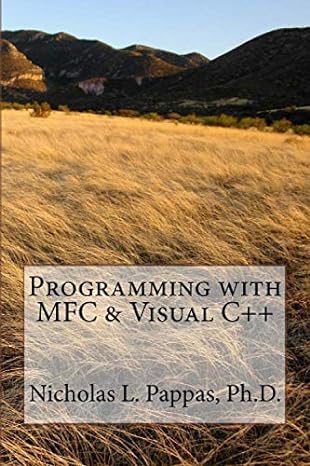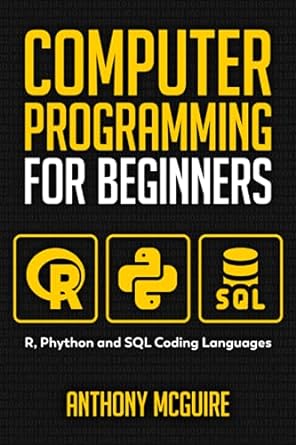Go back


Programming With MFC And Visual C++(1st Edition)
Authors:
Nicholas L. Pappas Ph.D.

Cover Type:Hardcover
Condition:Used
In Stock
Include with your book
Free shipping: April 06, 2024Popular items with books
Access to 3 Million+ solutions
Free ✝
Ask 10 Questions from expert
200,000+ Expert answers
✝ 7 days-trial
Total Price:
$0
List Price: $19.95
Savings: $19.95(100%)
Book details
ISBN: 1975776313, 978-1975776312
Book publisher: CreateSpace Independent Publishing Platform
Get your hands on the best-selling book Programming With MFC And Visual C++ 1st Edition for free. Feed your curiosity and let your imagination soar with the best stories coming out to you without hefty price tags. Browse SolutionInn to discover a treasure trove of fiction and non-fiction books where every page leads the reader to an undiscovered world. Start your literary adventure right away and also enjoy free shipping of these complimentary books to your door.
Programming With MFC And Visual C++ 1st Edition Summary: Computer Science Design SeriesProgramming with MFC & Visual C++ Prerequisite: Microsoft Visual C++ 6.0 or equivalent. Recommended especially if you are new to MFC: Jeff Prosise “Programming Windows with MFC” (1337 pages, ISBN 1572 316 950)This text is about how to use Windows Microsoft Foundation Classes (the MFC) and the software program Visual C++ to write programs using windows without knowing how to write the complex code that produces the windows. The MFC/Visual C++ combination immensely simplifies the writing of any program that uses one or more windows. Second, this is about learning how program with MFC from the bottom up so that you can produce the projects presented here. Many MFC classes and functions replace/obsolete many C, C++, and C# classes and functions. Consequently you can go directly to MFC, and save a lot of time and energy. Programming with MFC allows you to work at the top of the C hierarchy, while avoiding the limitations of C, C++, and C#. This text BEGINS to show you how to program with MFC by using Visual C++ to produce skeleton programs on the Visual C++ screen. Skeletons that include code producing the windows in which your programs will be presented. For example, creating front panels using dialog boxes in which you place controls (push button, combo box, slider, text box, etc.) in precise positions and how to initialize/program the controls.We say begin, because learning how to program in any language is an endless task. Especially MFC with its hundreds of functions. At this point we believe it is very important that you view the table of contents to know what we have chosen to present from the thousands of possibilities. We believe our choices represent the basic know-how one needs to get going with MFC.There is an unavoidable “cook book” element to using Visual C++ that dictates how to create the skeletons, and where to enter code in the skeletons. This text is different. Instead of referring you to code on a disk (with few if any comments), and instead of offering partial explanations in the text, requiring you have to go back and forth from book to disk, and wondering what to do next, we show you how code is written that actually creates programs that run on any computer using the windows operating system. That is why only the Visual C++ disk is required.We briefly explain most of the code lines used to produce the functions required by the projects. We expect the reader to have a basic programming capability. This text uses the Jeff Prosise text “Programming Windows with MFC”, as a very useful reference.With Jeff Prosise’s text supporting us we were able to write programs using windows, while knowing nothing about windows programming and very little about MFC and the various C languages. JP’s text gave us a great start with the design process producing programs presented in one or more windows. That experience brings us to this point. We wrote this text, because even with the JP reference we learned that we had to answer many “How-do-we-do-that?” questions. Answers we needed in order to produce programs that run. Answers we share with you by presenting selected topics in the form of working projects.Many types of programs can be implemented with MFC. We focus on dot exe (name.exe) executing programs. JP’s text makes very clear the fact that there is much, much more to MFC then what is presented here.
Customers also bought these books
Frequently Bought Together
Top Reviews for Books
Kits Voronaya
( 4 )
"Delivery was considerably fast, and the book I received was in a good condition."










